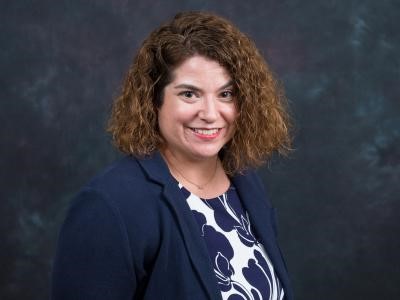By Juliana Hays
Dr. Lisa Sisler is taking a unique approach to the use of artificial intelligence in her Advanced Composition course.
The English professor and coordinator of college composition at Kean University gives an assignment that tells students to use AI. For one essay in her Advanced Composition course, students are told to plug their essay idea into ChatGPT. Then, they are assigned to take that AI generated text and make it their own.

“By having students ‘revise’ the ChatGPT essay, they learn how important their own voice is in their writing—that when a robot is writing for them, it takes them completely out of both the process and the product,” Sisler said.
While humanities professors grapple with the use of AI in the classroom, Dr. Sisler is among the many who are thinking deeply about how to implement AI into their curriculum.
To many, the rise of generative AI threatens the human touch that makes writing so special. As a result, Kean’s Department of English Studies is especially wary about implementing GenAI into their courses. How educators navigate the use of GenAI is crucial in keeping humans the focus of the humanities.
“We have to be aware, we have to be careful, and we have to be intentional,” Dr. Chris Friend, Kean assistant professor of English in New Media, said about integrating GenAI into English curriculums.
Many educators are fearful of using GenAI. A common fear is that their students will not grow as writers and thinkers. As a result, they turn to software programs such as Turnitin to detect AI writing in students’ work.
As of March, Turnitin says it has reviewed over 200 million papers.
“Over 22 million (approximately 11 percent of over 200 million) have at least 20 percent AI writing present. Over 6 million (approximately three percent of over 200 million) have at least 80 percent AI writing present,” Turnitin.com states on the subject.
By using Turnitin, educators can feel that they are encouraging students to use their own words rather than AI-generated words.
Others say Turnitin contributes to the further dehumanization of communication and education because it creates a wall between the author and the audience. Instead of writing for fellow humans, students are writing for a software company. Just like GenAI, Turnitin uses student submissions to further expand its own database. Which, in turn, helps make the company more money.

“I hope most of all that those people who use these technologies just think about why they’re using them,” said Dr. Abriana Jette, professor of English and coordinator of The Common Read at Kean. “What is motivating them to turn to something else? And why is that something else not a book or an article or something that’s really trustworthy and made by humans.”
Unfair use of GenAI is just another form of cheating and plagiarism, which has been around forever. Commonly, students resort to cheating and plagiarism because they are not confident in their work and are afraid of failing, Jette explained.
“Students want to impress, and they feel that the computer knows more than them,” she said. “That’s a fault of the educational system for not giving them the confidence to recognize that they themselves have the intelligence within them.”
When students feel confident in the material and the work they’re producing, they’re less likely to unfairly use GenAI, she said. Creating environments that encourage students to ask questions and try new things also can deter them from unfairly using GenAI.
“We need to be better at allowing that failure and frustration into our classrooms, making space for it and allowing students to experiment with voice, with structure to develop their writing beyond just putting words on the page,” Sisler said.
Navigating GenAI is rather tricky, especially in the humanities. Since GenAI is a rather new tool that only continues to grow, educators are still learning what works for their classroom.
“Generative AI is not the devil. Generative AI is not our enemy. Generative AI is one tool among many that we can wield to help us as long as we maintain control,” said Friend. “The minute we let a generative AI take over for us, we’ve lost.”

You must be logged in to post a comment.